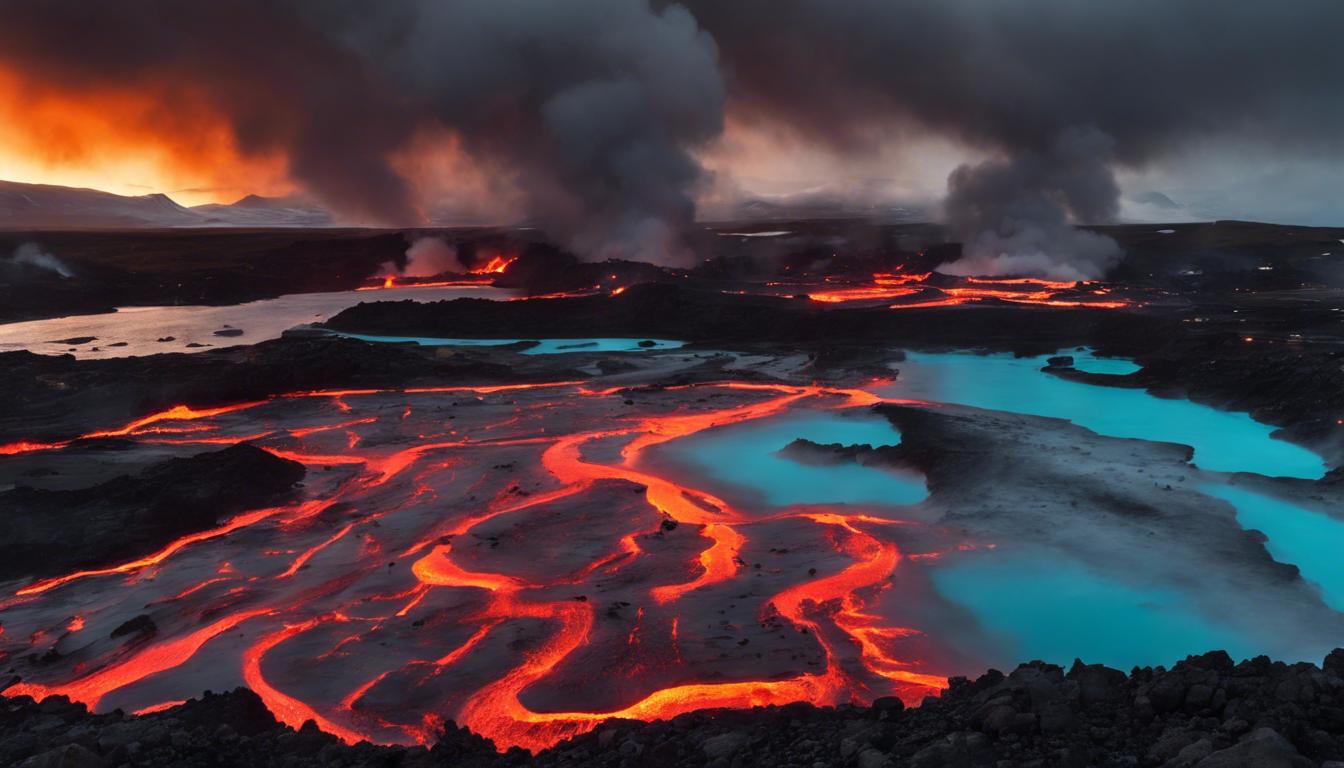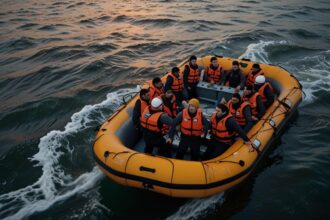The eruption on the Reykjanes Peninsula, marked as the most powerful to date, has led to the evacuation of Grindavik and the Blue Lagoon spa. Authorities keep a close watch as lava flows threaten local infrastructure, amidst fears of Iceland entering a prolonged period of heightened volcanic activity.
Iceland is currently experiencing the aftermath of a significant volcanic eruption, the fourth such event since December, on the Reykjanes Peninsula. This recent eruption has necessitated the evacuation of the town of Grindavik and the famous Blue Lagoon geothermal spa. Authorities have declared a state of emergency due to the eruption which commenced on Saturday evening, with geophysicist Magnus Tumi Gudmundsson noting it as the most powerful to date. Lava flows are advancing towards Grindavik, heightening concerns for the area’s safety.
Despite the eruptions, Iceland’s airspace remains open, with Keflavik International Airport and other regional airports operational. The Icelandic Meteorological Office continues to monitor the situation, even as adverse weather conditions hamper observations. The recent series of eruptions has led experts to suggest that Iceland may be entering a new phase of increased volcanic activity, potentially lasting decades or centuries.
The current eruption is characterized by the opening of a fissure approximately 3 kilometers long. Although no disruptions at Keflavik airport have been reported, there is a concomitant increase in efforts to manage and respond to the volcanic activity effectively, including steps to redirect lava flows away from populated areas and critical infrastructures. The Svartsengi power plant, vital for electricity and water supply to around 30,000 people, is being operated remotely following evacuations.
Notably, a worker is reported missing after purportedly falling into a fissure created by the volcano. This series of eruptions, amidst increased seismic activity monitored since October, reiterates Iceland’s geographic position above a volcanic hotspot and its susceptibility to frequent volcanic activity. Historically, Iceland has a record of managing such natural events, with significant disruptions occurring during the 2010 Eyjafjallajokull eruption which had widespread implications for European airspace.













